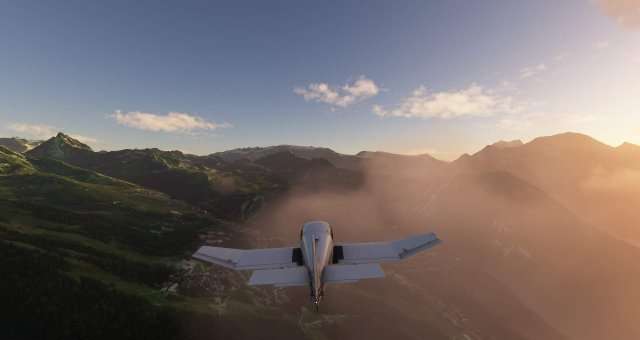
An introduction to aerodynamics and the basic principles that make an aircraft fly.
Contents
Guide to Basic Aerodynamics
All credit goes to jrodrr!
About This Guide
Not for use in real-world flight training. For simulator use only.
The Four Forces of Flight
There are four fundamental forces acting on an aircraft. Lift, weight, thrust, and drag.
Thrust is the force that propels an aircraft forward, and is produced by the powerplant (engine) and propeller. It opposes drag.
Drag is the force that retards the aircraft and opposes thrust. This is caused by the disruption of airflow around the aircraft.
Lift is the force that causes the aircraft to gain altitude. It is caused by the effect of air acting on an airfoil (wings and propeller blades), effectively pushing an aircraft “up”. It opposes weight.
Weight is the load of the aircraft itself, its crew, fuel and baggage. It opposes lift, and effectively pulls an aircraft down towards the center of the Earth.
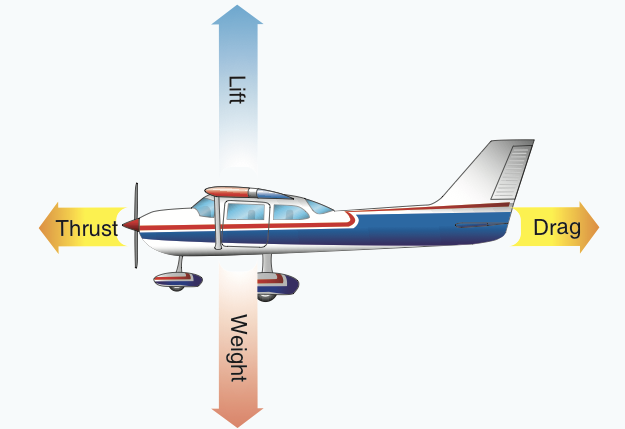
PHAK 5-1
More on Forces
When all forces are in equilibrium, the aircraft is said to be in straight-and-level, unaccelerated flight.
On the vertical axis:
- When thrust is greater than drag: The aircraft will accelerate.
- When drag is greater than thrust: The aircraft will deccelerate.
On the longitudinal axis:
- When lift is greater than weight: The aircraft will climb.
- When weight is greater than lift: The aircraft will descend.
It is important to note that there is much more discussion to be had on forces, as these change depending on when you’re in a climb, descent, or a turn. However, for the sake of simplicity, this information is not included in this guide. More information can be found in the Pilot’s Handbook of Aeronautical Knowledge, chapter 5.
What Is an Airfoil?
The airfoils most commonly referred to are the wing and propeller blade. An airfoil is a structure that is designed to produce a force on one of its surfaces from the air through which it is moving through. Basically, an airfoil is any structure on an aircraft that produces lift. Such surfaces are the wing and propeller blades.
It is important to know that there are many contemporary theories that attempt to explain the production of lift, and there is no exact consensus on a solid explanation. Where one mix of theories can attempt to explain lift, it may fail on one postulate, and where others may succeed on that postulate, it may fail on another.
Wings
The wings will produce vertical lift. As air moves through the upper side and underside of the wing, once the aircraft is travelling fast enough, increasing the angle of attack of the aircraft (and subsequently the wing’s AOA) by pitching the nose up will introduce several important principles in the theory of the production of lift.
Propeller Blades
Propellers are made in the same shape as that of the wings, except they are also slightly twisted. The blades will produce lift as thrust, therefore moving the aircraft forward.
Thrust vs Power
Although both terms are used interchangeably, they are not the same.
Piston engines produce power, which is then converted into thrust as the propeller blades slice through the air. Adding power will produce thrust.
Angle of Attack and Lift Coefficient
The chord line of the airfoil, briefly, is the line that divides an airfoil that extends from leading edge (where the oncoming relative wind is separated into an upper and a lower airstream) to the trailing edge (where the previously separated airstreams meet again).

The angle between the chord line of the airfoil, and the oncoming relative wind is known as the angle of attack.
A positive AOA results in a climb.
A negative AOA results in a descent (note that some wings are cambered such that some lift is generated at very small negative AOAs).
Lift Coefficient
To increase the angle of attack (AOA), you may add power or pitch the nose up. Increasing the AOA will result in an increase in a number known as the lift coefficient. The greater the AOA, the greater the altitude gain. However, a greater AOA comes at the expense of speed (and therefore power).
The lift coefficient is important as it dictates how much lift is generated. This is also an important number in determining the critical AOA.
Bernoulli’s Principle and Newton’s Third Law
Newton’s Third Law
For every force, there is an equal and opposite reaction. This means that as the aircraft is pitched up and the AOA of the wing is increased, the underside of the airfoil will deflect air downwards. Consequently, this produces a force in the opposite direction (up), resulting in a climb.
Michael Paetzold – Cross section of a wing airfoil depicting Newton’s third law
Bernoulli’s Principle
A pressure imbalance must be present for any airfoil generating lift.
Bernoulli’s Principle states that for any increase in velocity of a fluid (recall that air is a fluid), there will be an accompanying decrease in pressure. The reverse is true. For a lower velocity, there will be a higher pressure.
The shape of the wing, being slightly more curved on top than bottom (wing camber), will require the air on the top side of the wing to travel further to reach the trailing edge of the wing. Because it must travel further it must travel faster. Thus, according to Bernoulli’s Principle, the pressure of the air on the top side of the wing is decreased. Consequently, as the air on the bottom side will have less distance to travel, it has more time to travel less distance compared to the top, resulting in a higher pressure of the air on the bottom side of the wing.
Basic fluid dynamics state that any object immersed in a fluid will move toward the lesser pressure area of the pressure gradient, and away from the higher pressure area. Since the air on the bottom side of the wing has greater pressure, and the air on the upper side of the wing has lesser pressure, the aircraft will move up, and as such lift is produced.
It is also important to note that the curved nature of the wing, will cause flow turning, where lift is produced by turning a moving fluid.
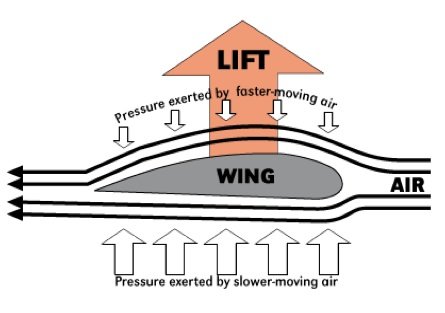
University of Alaska Fairbanks
Left-Turning Tendencies
You will notice upon takeoff that the aircraft wants to move toward the left, without making any inputs except for adding power. Because of the way the propeller spins, there are several factors working together that, unless corrected with the appropriate use of rudder and alieron, will cause the aircraft to yaw to the left.
Torque Effect
By now, we should be familiar with Newton’s Third Law. As the propeller spins clockwise, a downward force is placed on the left gear due to Newton’s Third Law, causing the left gear to have more friction than the right. As a result, the aircraft will want to turn left. In the air, this will cause a left rolling motion.
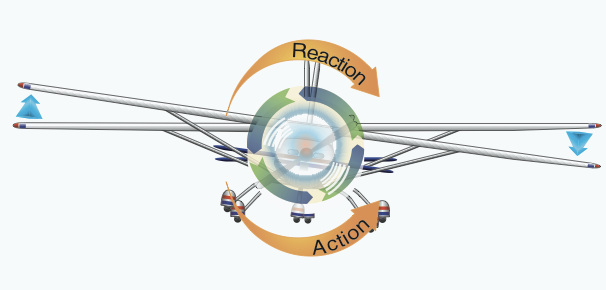
PHAK 5-47
P-Factor (Asymmetric Propeller Loading)
Such effect occurs because the downward moving blade (the one on the right side) will slice through a larger section of air than the upward moving blade (the one on the left side). This happens due to the angling of the blades. It is important to note that the blades do not lie solely on the vertical plane, but are slightly angled offset of 90 degrees.
P-Factor is at its maximum effect whenever the aircraft is at a high angle of attack, such as during takeoff and slow flight.
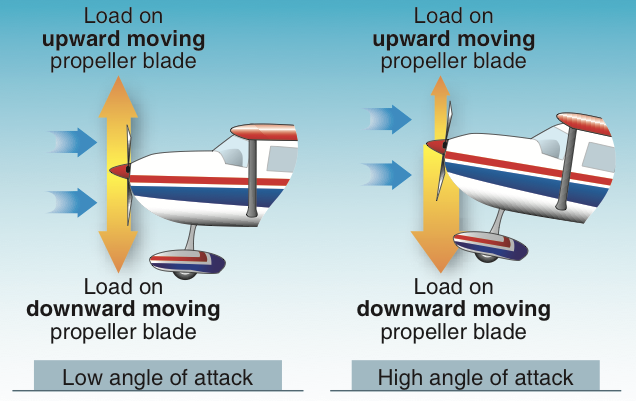
PHAK 5-51
Gyroscopic Precession
In essence, a propeller is basically a spinning disc. This gives it the properties of a gyroscope. One of these properties is gyroscopic precession. This means that whenever a force is applied to a gyroscope, in this case our propeller, that force will be felt 90 degrees ahead in the direction of the rotation of the disc. So, 90 degrees to the right.

PHAK 5-49
Spiraling Slipstream
This is the final left-turning tendency. As the propeller spins, a stream of air is created that wraps around the aircraft. This stream will hit the left side of the tail, causing a yawing motion to the left.

PHAK 5-48
Stalls and Critical AOA
A stall occurs when air begins to flow less smoothly over the upper surface of the airfoil, and the airflow begins to separate from the wing. When this happens, the airfoil can no longer produce sufficient lift and is said to be stalled.
An impending stall can be felt by buffeting of the aircraft as the airflow separates from the rear of the wing first. You will also notice that one of the wings may stall first before the other. It is important to note that most aircraft are designed to stall from the inside of the wing outwards, to provide the alierons with the most authority for recovery procedure.
CL-MAX
The critical angle of attack is the AOA at which the aircraft will stall, and is always the same for a certain type of aircraft. Typically, this number is at about 15 degrees AOA. This is also the maximum of the lift coefficient, where after this, the lift coefficient begins to reduce.
Most, if not all aircraft are equipped with stall warning horns to advise the pilot if they are in a stall, or are about to enter one.
NASA
Recovering from a Stall
When a stall occurs, immediately reduce the AOA, roll the wings level, and add full power. As soon as the flying speed returns, level the nose and manage power and pitch appropriately.

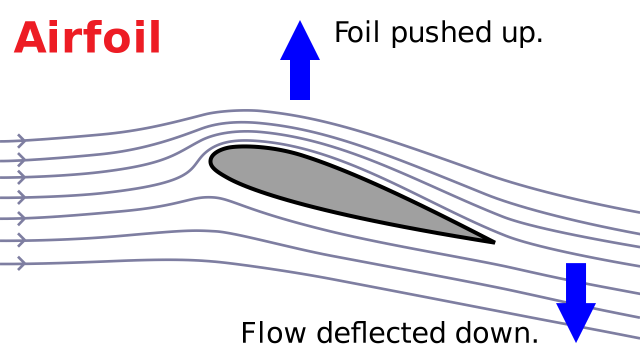
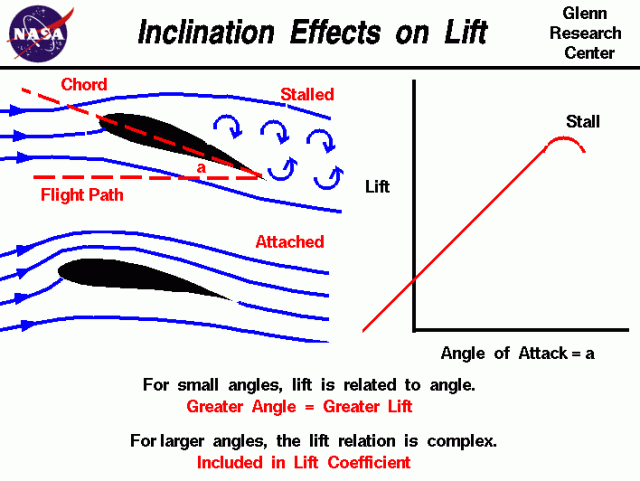


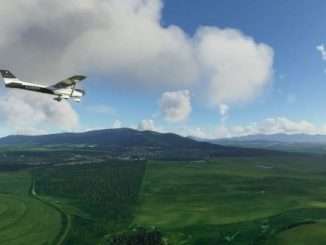

Be the first to comment